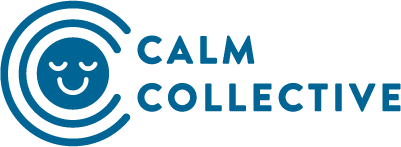Embracing Neurodiversity at Work
Despite significant progress in recognising the importance of diversity and inclusion in the workforce today, there’s still a lack of awareness and lingering stigma surrounding neurodiversity. This gap presents a challenge towards creating a truly inclusive workplace for all.
Neurodiversity can be a valuable asset to organisations. Those that wholeheartedly embrace neurodiversity cultivate an inclusive work environment where every individual's contributions are genuinely appreciated.
In this article, we'll explore the concept of neurodiversity, the benefits of neurodiversity and how organisations can embrace neurodiversity at work.
What is neurodiversity?
Neurodiversity refers to the variations in brain function among individuals, influencing their day-to-day mental processes. It embraces how different people’s brains work and their behaviour, seeing it as a normal part of human diversity.
Although neurodiversity was originally used in reference to those diagnosed with Autism Spectrum Disorder (ASD), it has since encompassed a range of other neurological or developmental conditions such as Attention-Deficit Hyperactivity Disorder (ADHD), Dyslexia and more (Resnick, 2023).
Neurotypical vs Neurodivergent
Under the umbrella term of neurodiversity, there are two sub-categories: Neurotypical and Neurodivergent.
Neurotypical refers to individuals with the perceived standard brain function whereas Neurodivergent refers to someone with the perceived different brain function (Resnick, 2023).
Embracing neurodiversity fosters a more inclusive understanding of human differences, encouraging acceptance and appreciation of diverse cognitive experiences. To better understand the importance of neurodiversity in the workplace, let’s talk about benefits!
The benefits of embracing neurodiversity
Innovation and Creativity
Neurodivergent individuals are often able to think outside of the box because of how different their brains are wired to be. This means that they are able to approach challenges uniquely and discover innovative solutions that others may not consider.
Their perspective can spark creativity and fuel innovation, giving companies a competitive edge (Ganesh, 2023).
Increased Productivity
Many neurodivergent individuals possess exceptional attention to details and the ability to hyperfocus on tasks (Wallace, 2023). The ability to dive deep and uncover insights can help to increase organisational productivity in areas that require thorough analysis or quality control.
Broader Talent Pool
Neurodiversity brings about a wide range of skills and abilities. As mentioned earlier, neurodivergent individuals possess creativity, innovation and strong observational skills. However, these are not the only attributes that neurodivergent individuals have. Some of the other skills include proficiency in pattern recognition, information processing, extraordinary mathematical and logical reasoning skills (Alludo, 2023).
By tapping into these diverse range of skills and abilities, organisations can build a broader talent pool that fosters collaboration and problem solving.
Ways to make workplaces neurodiverse-friendly
It is important for organisations to recognise and foster an environment that is inclusive for all people, including those that fall in the neurodivergent sub-category. Providing support and adjustments for people with different needs or challenges is just as important as recognising their strengths and talents.
Below are some ways organisations can make workplaces more neurodiverse-friendly.
Raise Awareness and Provide Training
Educate employees about neurodiversity to dispel myths and reduce stigma. Conduct workshops or training sessions to help colleagues and managers to better understand what neurodiversity is, the types of conditions and how to accommodate them (Harris, 2023).
Having leadership training for managers will help to equip them with the skills needed to lead diverse teams effectively and the ability to create personalised approaches for managing and supporting individual differences (Goswami, 2023).
Fostering this culture of understanding and inclusivity will create a welcoming environment for everyone.
Communicate Clearly
When speaking to neurodivergent individuals, it is important to use clear and direct communication. Avoid using sarcasm, euphemisms or any messages that may sound confusing. This may involve providing written or verbal instructions for tasks. If necessary, break down the tasks into smaller and simpler steps to follow (Baumer and Frueh, 2021).
Provide Accommodations for Different Needs
Employers should provide accommodations to support neurodivergent individuals at workplaces. This may include flexible work arrangements, visual or sensory aids, quiet spaces or extra time to complete tasks.
This would help individuals to ease workplace challenges and help them to perform at their best (Baumer and Frueh, 2021; Wallace, 2023).
Offer Mentorship Programs
Employers can offer mentorship or coaching programs to support the growth and development of neurodiverse employees. It can be a peer or someone that is “higher up” in the organisation with the ability to support such individuals. Providing guidance and feedback to navigate workplace challenges can help them to build confidence and integrate into the workplace (Harris, 2023).
Taking the first step towards inclusivity
Overall, embracing neurodiversity at work can provide organisations a huge competitive advantage. Fostering an inclusive culture that values neurodiverse contributions allows organisations to unlock the full potential of their workforce and drive innovation and productivity.
It's time for workplaces to move beyond tolerance and actively embrace the richness that neurodiversity brings to the table. In doing so, we pave the way for a more inclusive and dynamic future of work.
References:
Alludo (2023) 5 strengths neurodivergent employees bring to the workplace. Alludo Blog. Retrieved November 27, 2023, from https://blog.alludo.com/5-strengths-neurodivergent-employees-bring-to-the-workplace/
Baumer, N., & Frueh, J. (2021) What is neurodiversity? Harvard Health. Retrieved November 27, 2023, from https://www.health.harvard.edu/blog/what-is-neurodiversity-202111232645
Ganesh, K. (2023) The ultimate guide to neurodiversity in the workplace: Everything you need to know. CultureMonkey. Retrieved November 27, 2023, from https://www.culturemonkey.io/employee-engagement/neurodiversity-in-the-workplace/#2-enhanced-productivity
Goswami, V. (2023) 5 Ways to Promote Neurodiversity in the Workplace. VantageCircle. Retrieved November 29, 2023, from https://blog.vantagecircle.com/neurodiversity-in-the-workplace/#3-provide-proper-training
Harris, M. (2023) Neurodiversity in the Workplace: Promoting Inclusivity for Employees with Neurodiverse Conditions. Hirebee. Retrieved November 27, 2023, from https://hirebee.ai/blog/candidate-relationship-management/neurodiversity-in-the-workplace-promoting-inclusivity-for-employees-with-neurodiverse-conditions/#Strategies_for_creating_an_inclusive_workplace_environment_that_accommodates_neurodiverse_employees
Resnick, A. (2023) Neurodiversity and What It Means to Be Neurodiverse. Verywell Mind. Retrieved November 27, 2023, from https://www.verywellmind.com/what-is-neurodiversity-5193463
Wallace, E. (2023) Embracing Neurodiversity: Unleashing the Power of Unique Minds. Medium. Retrieved November 27, 2023, from https://medium.com/@ekhwallace/embracing-neurodiversity-unleashing-the-power-of-unique-minds-cc7b9a747906
